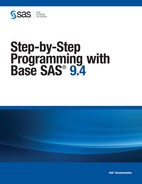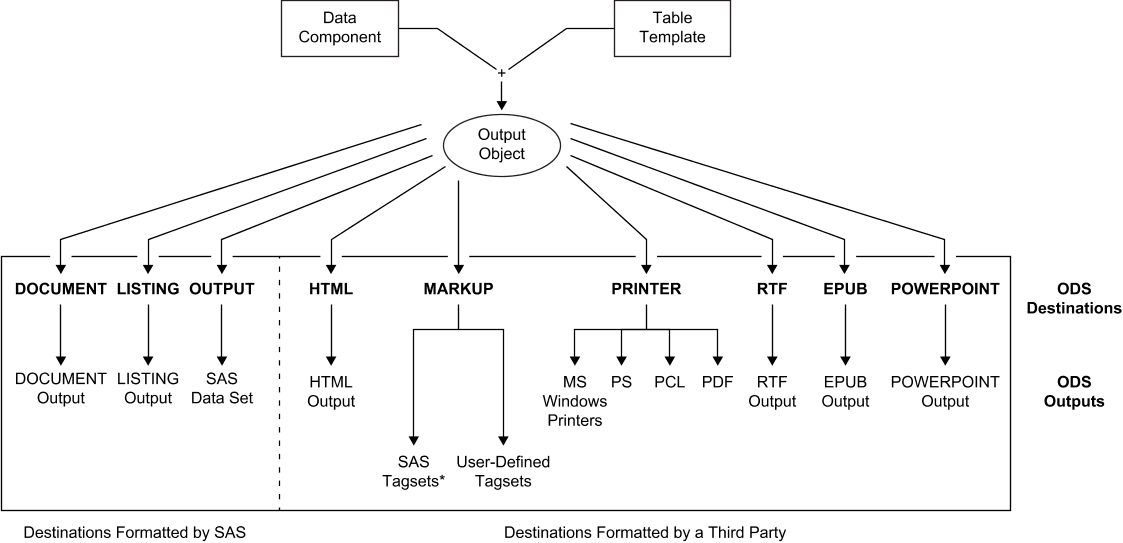Understanding ODS Output Formats and Destinations
The Output Delivery
System (ODS) enables you to produce output in a variety of formats
that you can easily access. ODS creates various types of tabular output
by combining raw data with one or more table templates to produce
one or more output objects. The basic component of ODS functionality
is the output object. The PROC or DATA step that you run provides
the data component (raw data) and the name of the table template that
contains the formatting instructions. The data component and table
template together form the output object. These objects can be sent
to any or all ODS destinations, such as PDF, HTML, RTF, or LISTING.
By default, in the SAS windowing environment for Windows and UNIX,
SAS uses ODS to produce HTML output. By default, in batch mode, SAS
produces LISTING output. By specifying an ODS destination, you control
the type of output that SAS creates.
The following figure
illustrates the concept of output. The data and the table template
form an output object, which creates the type of ODS output that you
specified in the ODS template.
The following definitions
describe the terms in the preceding figure:
data component
Each procedure that
supports ODS and each DATA step produces data, which contains the
results (numbers and characters) of the step in a form similar to
a SAS data set.
output object
ODS combines formatting
instructions with the data to produce an output object. The output
object, therefore, contains both the results of the procedure or DATA
step and information about how to format the results. An output object
has a name, a label, and a path.
ODS destinations
An ODS destination
specifies a specific type of output. ODS supports a number of destinations,
including but not limited to the following:
..................Content has been hidden....................
You can't read the all page of ebook, please click here login for view all page.

